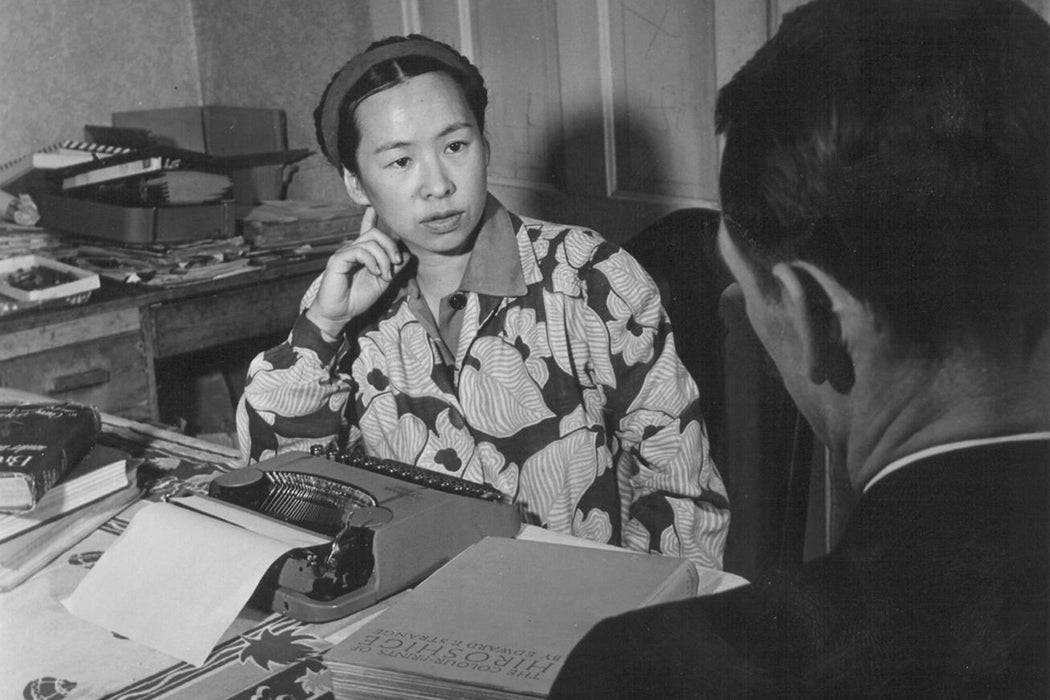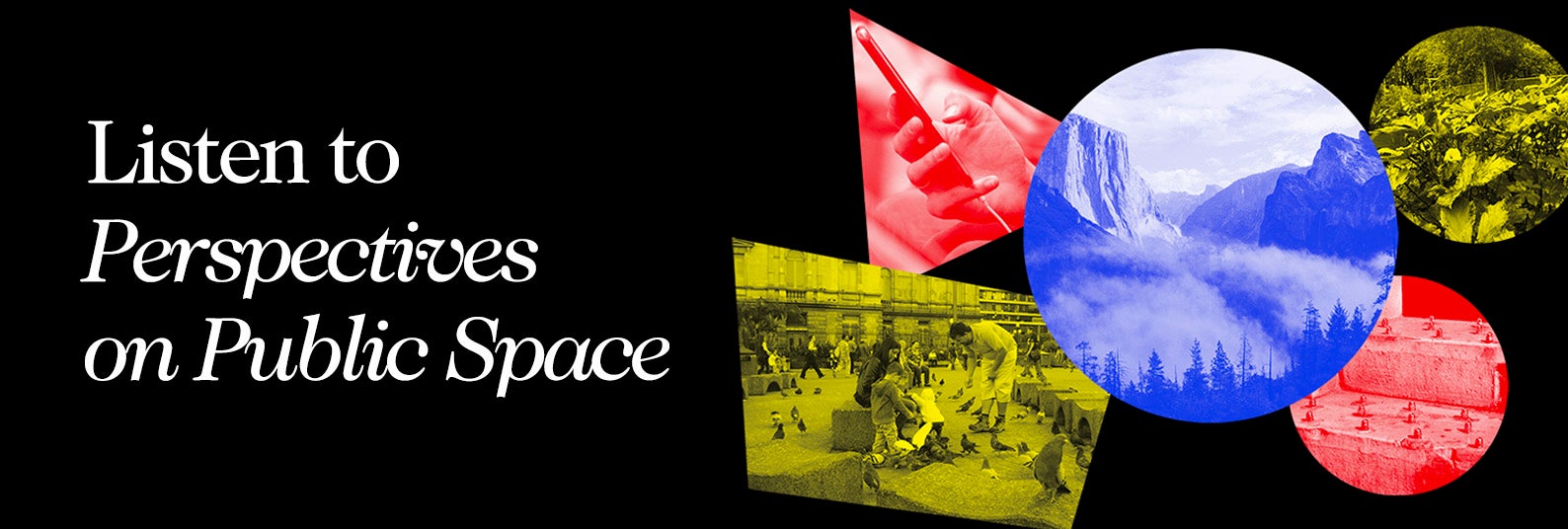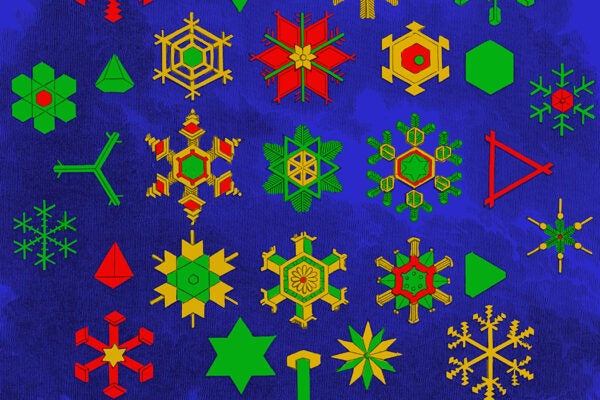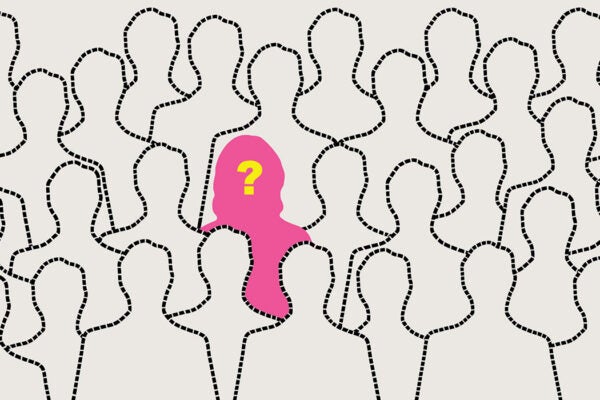Growing up on the West Coast in the 1930s, young Japanese American women seeking life tips had one stalwart source of advice: the “I’m Telling You, Deirdre” column. Deirdre was the pen name of Mollie “Mollie” Oyama Mittwer, a second-generation Japanese American (Nisei) writer working as advice columnist for the San Francisco-based community newspaper New World-Sun from 1935 to 1941.
“The more I delved into the background of the witty and opinionated ‘Deirdre,’” historian Valerie Matsumoto writes, “the more aware I became of the active network of Japanese-American women and men writers and the breadth of the cultural and social issues they tackled.” For instance, in a 1939 column titled “Housewives Have No Spare Time,” Deirdre “presaged the discontent Betty Friedan would later examine in The Feminine Mystique.”
“As hard as I’m toiling around the house, my folks complain and think that I’m not doing enough. It’s aggravating, really,” Deirdre wrote—a lament that would not be out of place even today. Deirdre advertised herself as “happy to answer any question put her concerning family affairs, love and other sex problems, social etiquette and other personal questions.”
Yet Matsumoto considers Deirdre’s role “far more complex than that of mainstream etiquette mavens,” noting that “[h]er task was to provide the Nisei with guidelines to proper behavior that would enable them to navigate safely the social conventions of the white world as well as to meet the standards of their parents and the Japanese-American community.”
Born Mary Oyama in 1907, Mittwer began her career as a journalist in her twenties and contributed to a range of Japanese American publications in Los Angeles and San Francisco. She was among the nine women (and fifteen men) featured in a 1940 article on “Who’s Who in the Nisei Literary World,” alongside other budding luminaries such as the author Hisaye Yamamoto.
Unsurprisingly, “[m]arriage was a recurrent theme in Deirdre’s column,” Matsumoto writes. Amid changing generational and cultural values, Deirdre addressed debates such as love versus arranged matches and whether urban women should marry farmers.
“Tensions surrounding the issues of courtship and marriage were compounded when the factor of race entered the picture,” Matsumoto adds. For example, one of Deirdre’s readers sent in a letter in late 1935 complaining that his sister had drawn flak for her relationship with a Chinese American man, “as if that were a great social crime.”
Perhaps coincidentally, Deirdre had recently praised a Nisei woman for dating a white man. The woman was quoted as saying, “It’s about time we Nisei and we Japanese got over our prejudices. You must admit that a lot of us have them, too.”
More to Explore
Racial Hierarchies: Japanese American Immigrants in California
But, at the same time, the columns emphasized that the cross-ethnic relationships featured were “perfectly platonic,” sometimes calling the woman “too young to be thinking about such things.”
Such rhetoric could be a way of “skirting the issue of interethnic sexual relations” and moving the issue to “the less threatening ground of casual camaraderie,” explains Matsumoto. “We are reminded simultaneously of the strength of prevailing norms and the presence of a small minority who pushed against sociocultural boundaries, both ethnic and mainstream.”
In fact, Mittwer’s husband, Frederick, whom she married at thirty—which Matsumoto notes was “late for a Nisei”—was a mixed-race man who also worked for a Japanese American newspaper. Moreover, Matsumoto describes Mittwer as expressing “strong concerns regarding multicultural relations. She never tired of trying to push her readers to ‘mix’ socially with non-Japanese, and to politicize her readers—as minority people and as citizens.”
Replying to a question on “whether the Nisei could be assimilated into US life,” Deirdre quoted an argument that “we already are quite thoroughly Americanized…rather it is a question of: ‘How far are the Americans willing to LET US BECOME ASSIMILATED.’”
Weekly Newsletter
Her columns also featured conversations with second-generation writers from other ethnic backgrounds, such as Armenian American Leon Surmelian and Italian American John Fante (“a Nisei like the rest of us, as he was born in the United States”). Matsumoto observes the African Americans were missing from this glowing coverage of other minorities—perhaps as a result of racial prejudice among Japanese Americans.
“Nonetheless,” she writes, “it is clear that Nisei writers looked both into their own community and out into the large society for inspiration in grappling with the articulation of a distinctive American ethnic identities.”
Prewar writing like Mittwer’s “brings to light the talents and concerns of the Nisei,” Matsumoto concludes, while “open[ing] up critical questions” about race relations and women’s experiences.








